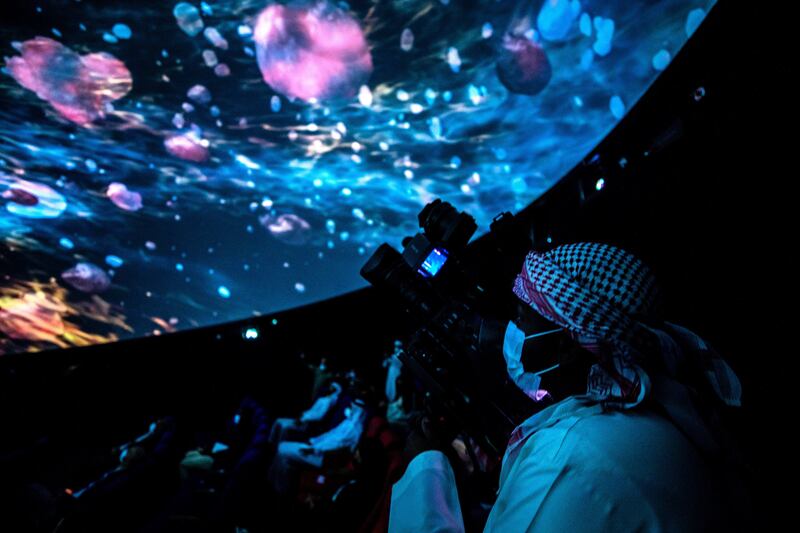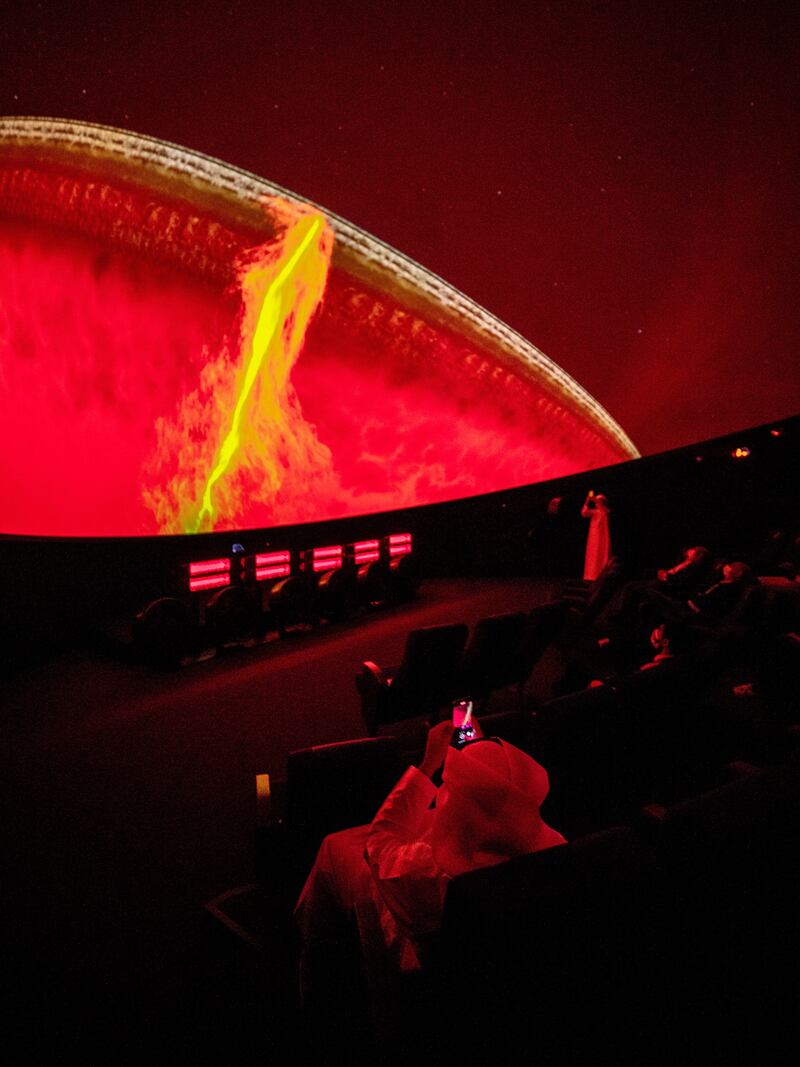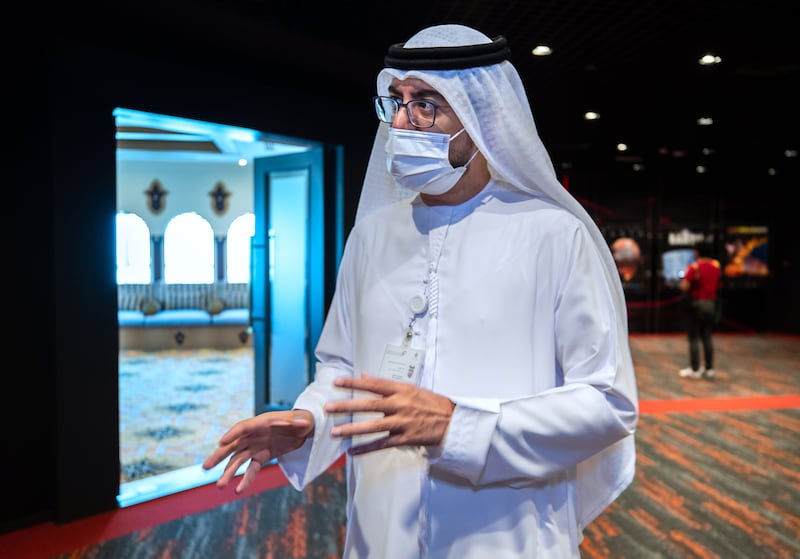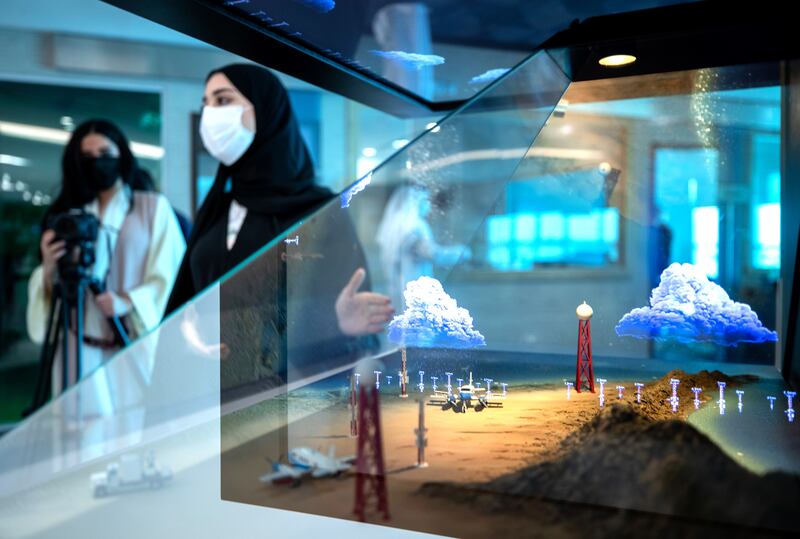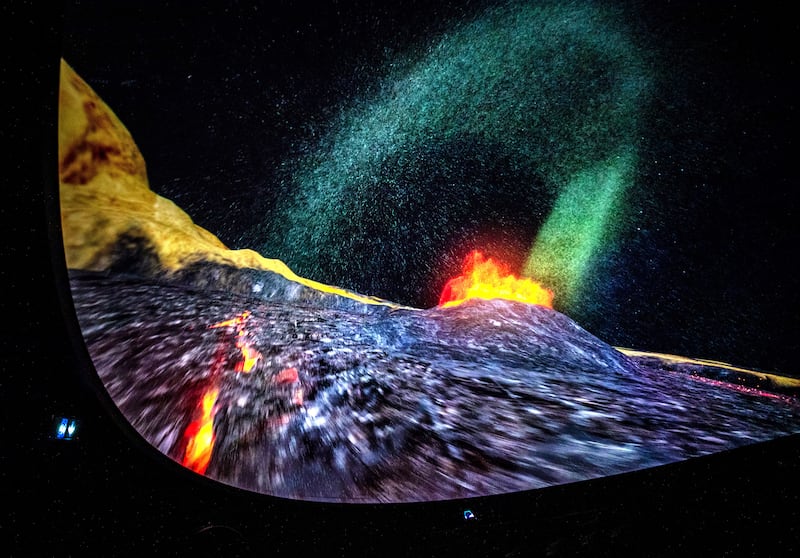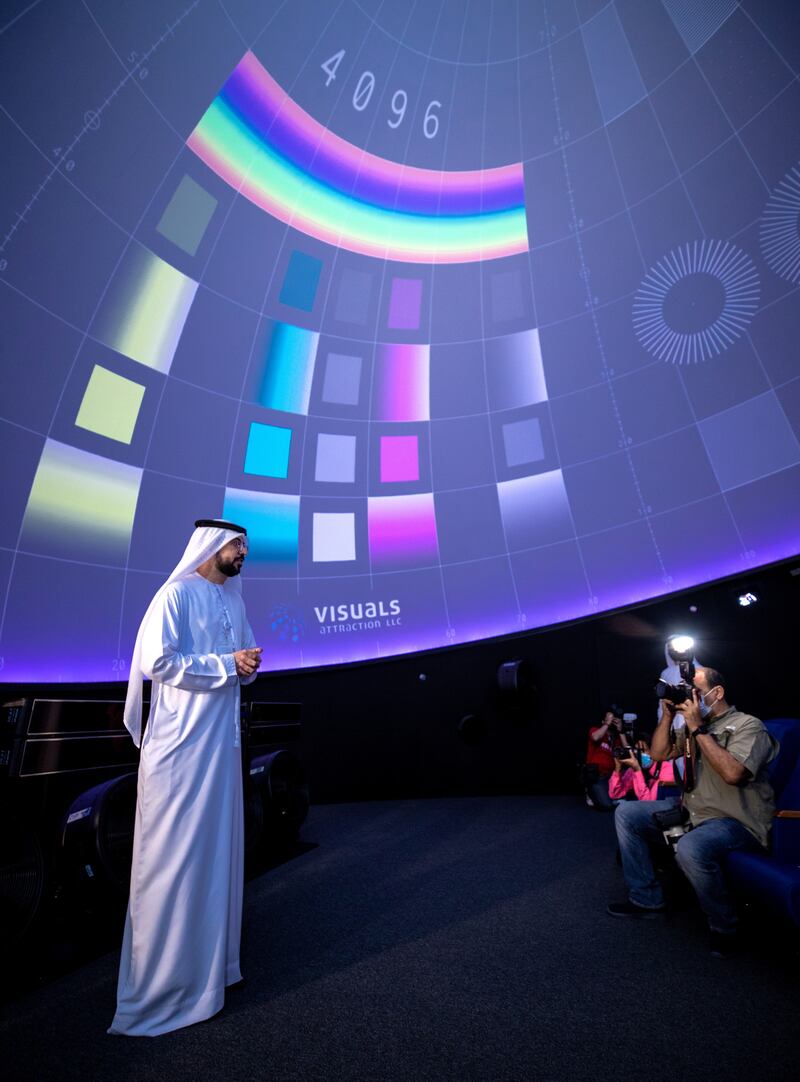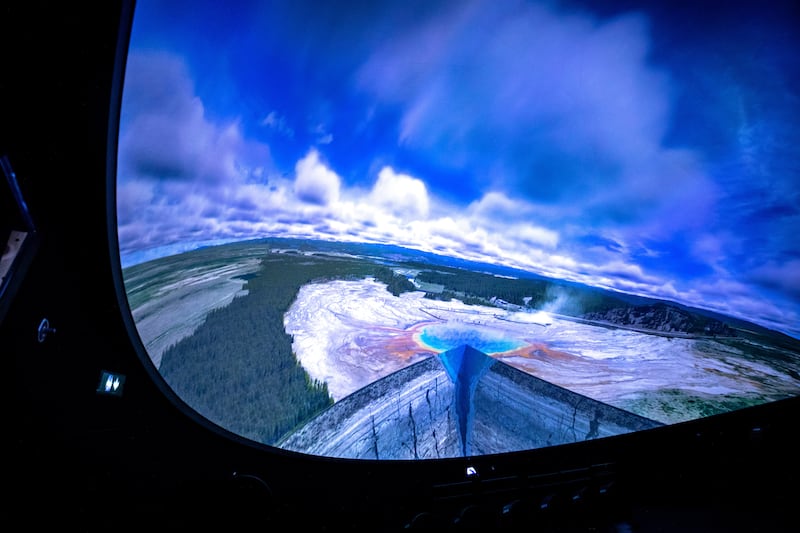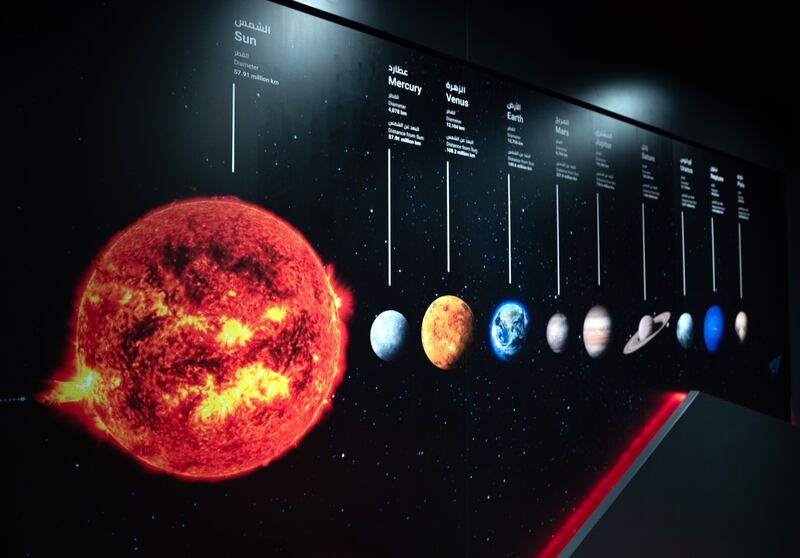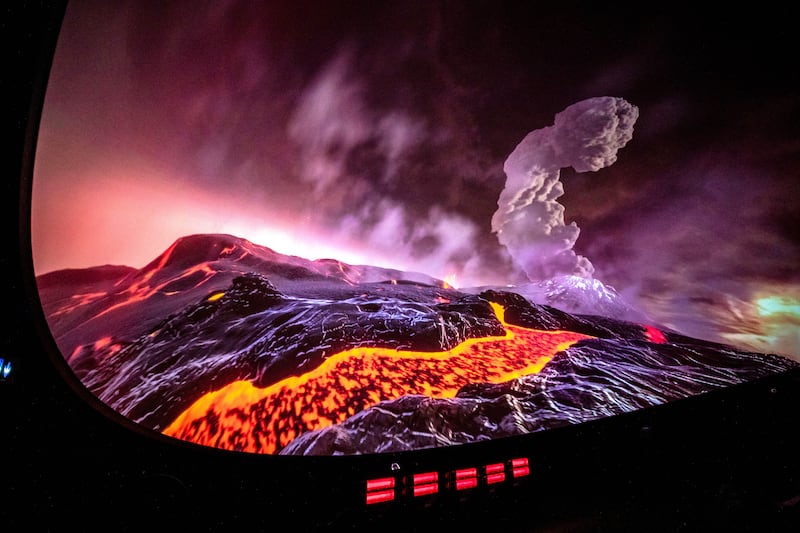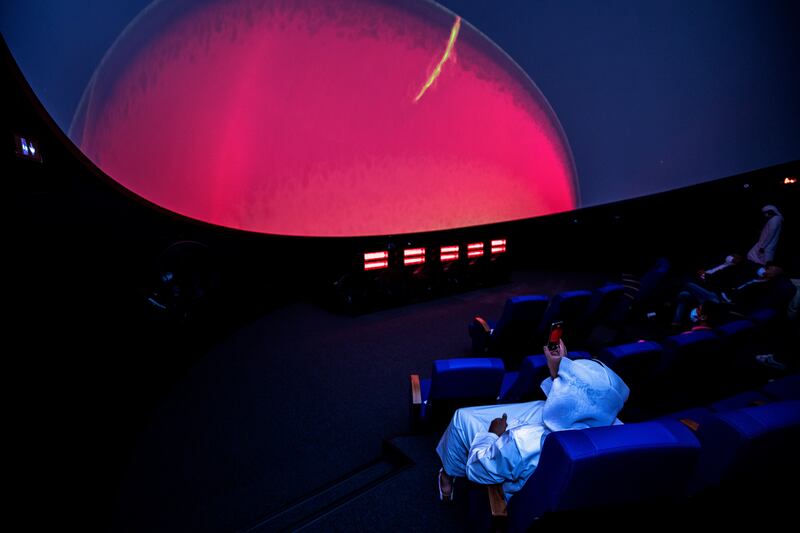With heaters, artificial fog and seats that shake to mimic a volcano or earthquake, the National Centre of Meteorology’s “science dome” is designed to create an immersive experience.
It has five projectors, enough seats for 60 people and a special effects system that can take visitors on a 4D journey through extreme and unusual weather from the comfort of their chairs.
The dome, which is 12 metres in diameter, opened on Tuesday at the NCM’s headquarters in Al Shawamekh, Abu Dhabi. It is a key part of the weather bureau’s strategy to report the diverse weather systems of the region.
It is also envisaged that the centre will operate as scientific facility where meteorologists can assess weather data, forecasting and geophysics in a more accessible way.
“Any tool that can help people understand weather, we will utilise,” Omar Al Yazeedi, director of research, development and training at the NCM, told The National.
“We think [the dome] is a very important way to make the public understand weather phenomena better. It is a canvas.”
UAE's science dome offers a theme park-style experience
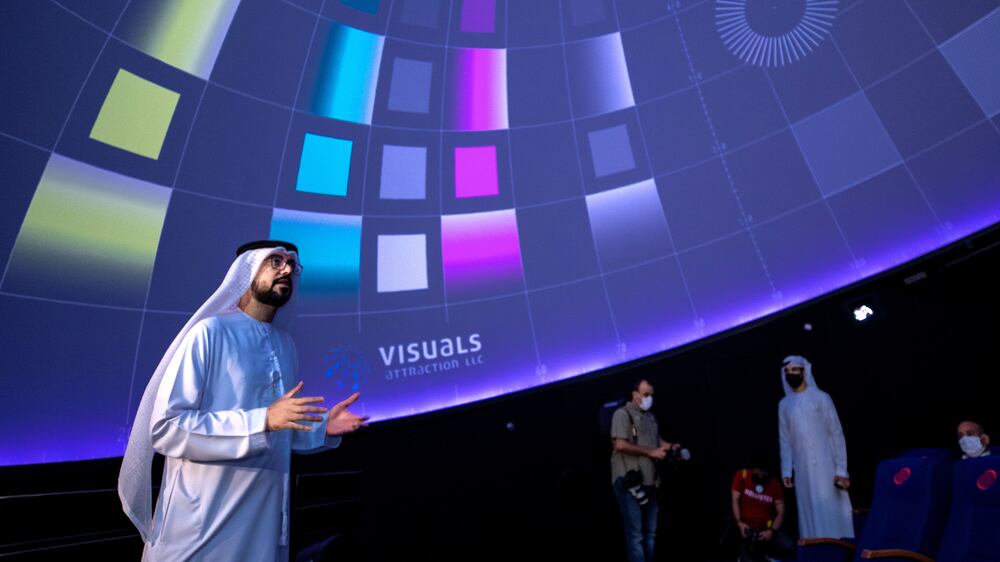
Construction took about a year despite the challenges brought by Covid-19. The facility will welcome school trips and members of the public. A website will be launched soon for people to book.
The dome will also bring complex NCM programmes such as cloud seeding to life. The bureau first established the programme in the 1990s. It involves salt flares being fired into the updraft of clouds to trigger more rainfall. The programme has since expanded. In 2015, the UAE established the Research Programme for Rain Enhancement to look into ways to tackle water security by awarding grants to researchers.
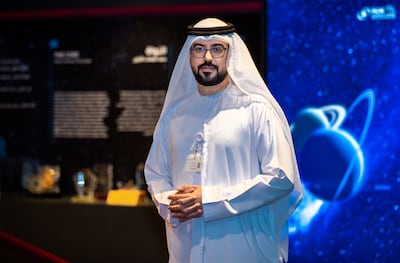
“Seeding is one of the key projects of the NCM,” said Mr Al Yazeedi. “We have been doing it for a long time. It is working and a study on the effects of cloud seeding will be published in the future.”
But conveying the complexity of the programme to the public has proved a challenge. A film about seeding is being made for the dome. “We noticed a lot of material is just being said by scientists and we don’t have visualisations. People cannot relate as only the specialist will understand," said Mr Al Yazeedi.
Hanging on the walls of the centre are pictures illustrating the wildly different forms of weather seen in the UAE over the years. Snow, lightning and cyclones are proof the UAE has a diverse climate that is often overlooked in some coverage that speaks only of its sun.
Storms caused heavy flooding across the UAE in 2016, snow covered Ras Al Khaimah’s Jebel Jais last year and 2010’s Cyclone Phet even brought out the UAE’s surfers, who headed for the swells off Fujairah. The NCM covers this climate diversity and its social media pages have shown just how varied it can be. The sun often shines in Dubai while torrential rain hits Sharjah.
“Previously, people thought the weather was only hot, which is not true,” said Mr Al Yazeedi. “You see in the summer the amount of rain we get in the mountains and northern areas. Maybe in Abu Dhabi or Dubai or over the cities you don’t see much but people are interested.
"We would like to make the public and all people understand the real situation over the country, not the perception. We capture exactly what happens, use credible data and our reports are highly accurate. We do not go with the flow."
